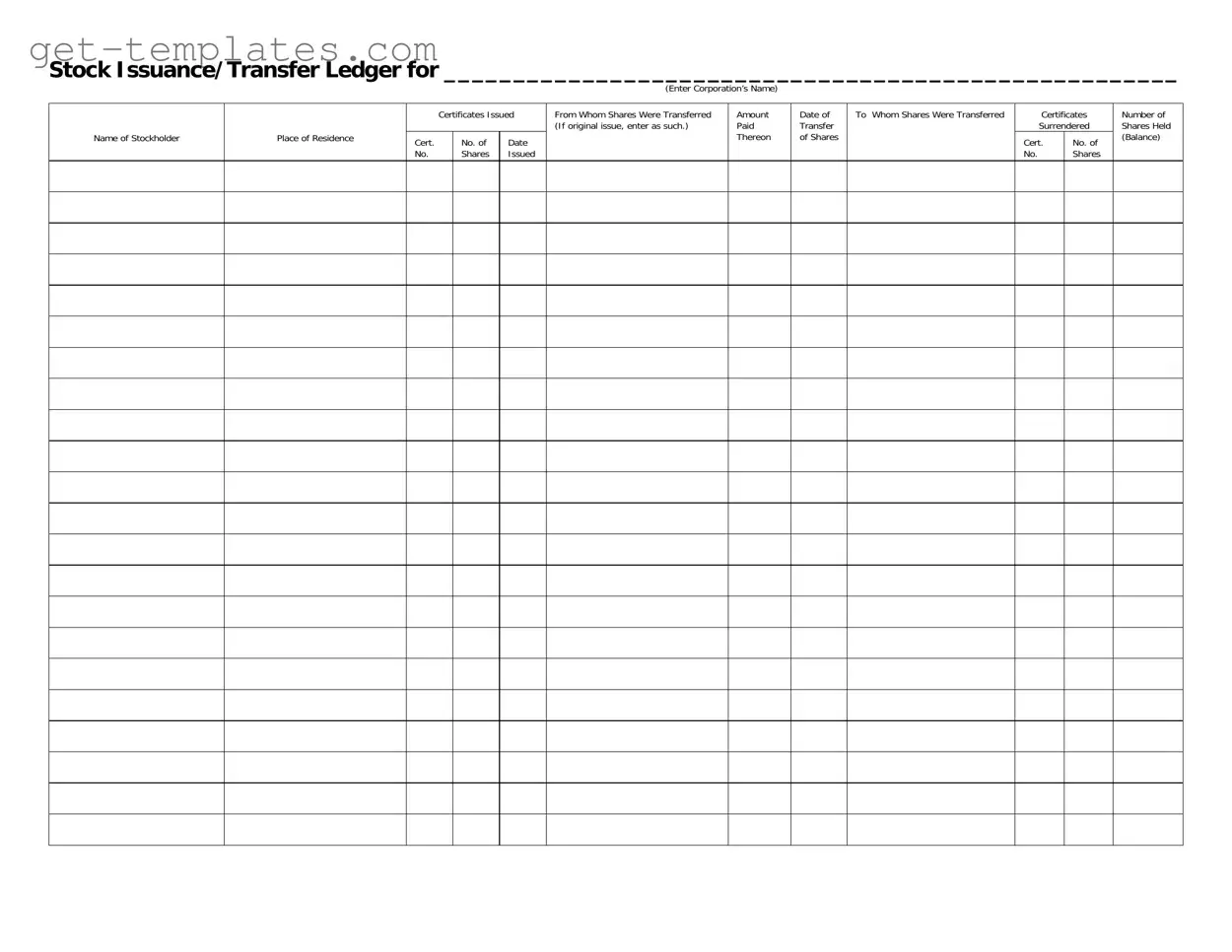The Stock Transfer Ledger form serves as a crucial tool for corporations managing their stock issuance and transfers. This document tracks essential information related to stockholders, including the name of the stockholder and their place of residence. It provides a clear record of certificates issued, detailing the certificate numbers and the dates on which shares were issued. Additionally, the form captures the source of the shares, indicating from whom the shares were transferred, or noting if it is an original issue. The amount paid for the shares is also documented, ensuring transparency in financial transactions. Furthermore, the date of transfer is recorded alongside the recipient of the shares, allowing for easy tracking of ownership changes. Certificates surrendered during the transfer process are noted, including their corresponding certificate numbers and the total number of shares held after the transaction. This comprehensive approach ensures accurate and organized management of stock ownership within a corporation.

